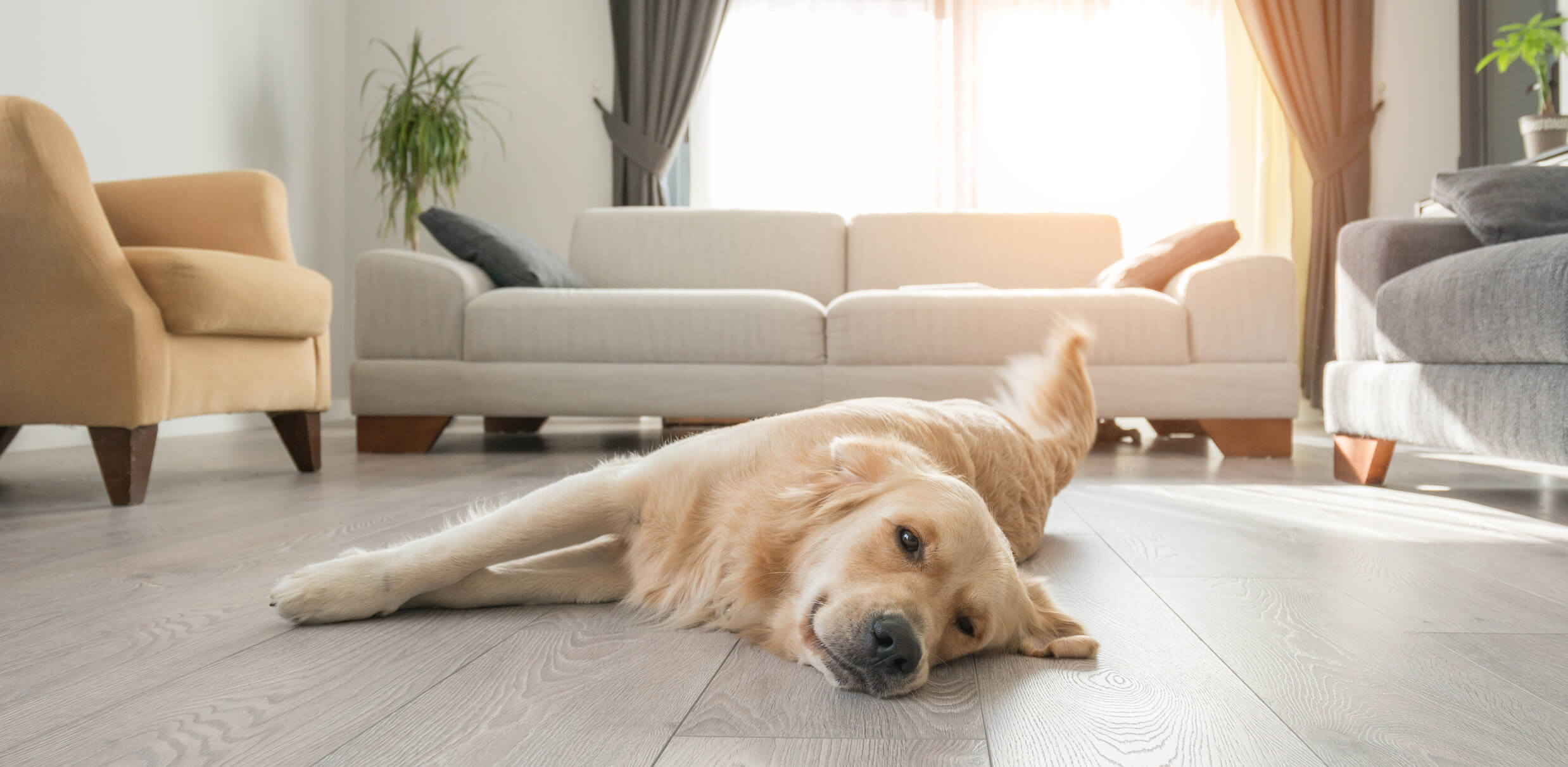
Help Your Pup Live Happily with Hip Dysplasia
Limping, pain, stiffness—these are all signs of hip dysplasia in a dog. When dogs are diagnosed with hip dysplasia, pet parents fear they can do nothing about the disorder. After all, hip dysplasia is in a dog’s genes, which means there’s no cure.
Despite a lifelong diagnosis, dogs with hip dysplasia have many options for treatment. Pet parents can help out by speaking to a vet about changes in diet, lifestyle and exercise. Here’s how you can help your pup live a happy, healthy life with hip dysplasia.
What is hip dysplasia in dogs?
Hip dysplasia is a genetic disorder affecting one or both hip joints. The hip is a ball and socket joint, meaning the femoral head (ball) and acetabulum (socket) must fit together for proper joint movement. Hip dysplasia occurs when either the ball or socket is misshapen. Instead of nicely conforming to one another, the abnormally-shaped ball and socket will rub together and cause friction. Excessive friction wears down the cartilage, which can develop into osteoarthritis.
Certain dog breeds are born with hip dysplasia, and symptoms can show up as early as five months of age. The condition becomes more apparent as the dog becomes older. Large and giant breeds are most at risk for hip dysplasia, including German Shepherds, Great Danes and Newfoundlands. While hip dysplasia is a genetic disorder, lifestyle factors can make the condition worse. Excessive weight gain and overworking the dog can accelerate the progression of hip dysplasia.
Symptoms of hip dysplasia
Dogs with hip dysplasia experience pain in the affected hip joint(s). You may notice the pup is reluctant to run, play or climb up the stairs. Hip dysplasia limits mobility due to inflammation, thin cartilage and insufficient fluid in the joint. Symptoms vary depending on how mild or severe the case is in your dog, but pain, stiffness and limited mobility are usually present in dogs with hip dysplasia.
Here are some other symptoms to look for:
- Difficulty standing or sitting
- Lameness in the hind leg
- “Bunny hopping” with both hind legs
- Atrophy of hind thigh muscle
- Grating motion as they walk

Treatments and lifestyle changes
While canine hip dysplasia has no cure, medical treatments are available to reduce pain and improve your pup’s quality of life. Supplements, lifestyle choices and even surgery can make it possible for dogs with hip dysplasia to get back into the activities they love.
Here’s what you can do to help out your pup.
- Weight management: Extra weight can worsen symptoms of hip dysplasia. Fat stores place unnecessary stress on the joints, which increases discomfort and the risk of developing osteoarthritis. Alleviate stress on the affected hip by keeping your pup at a healthy weight for their age, size and breed. Monitor your dog’s daily caloric intake and ask the vet for recommendations on how to maintain a balanced diet.
- Strengthening exercises: If your pup has slowed down during playtime, consider switching to gentler activities that focus on rebuilding the rear leg muscles. It’s still possible for dogs with hip dysplasia to stay active while minimizing pain and stiffness in the affected hip joint. Swimming is a great alternative to long walks because it’s a low-impact exercise that engages muscle groups throughout the body. Training your dog to walk backwards can also strengthen thigh muscles.
- Glucosamine supplements: Glucosamine is a compound that naturally occurs in the body. It can repair cartilage, speed up recovery and lubricate the joints. Dogs that take glucosamine supplements are less likely to develop osteoarthritis, and this compound can reduce the pain, stiffness and inflammation associated with hip dysplasia. These supplements can replenish the glucosamine that’s lost through the constant grinding in the affected hip joint.
- Hip replacement: Dogs with severe cases of hip dysplasia might qualify for surgeries that can eliminate discomfort and restore healthy range of motion. One common procedure is a hip replacement, which involves removing the abnormal ball and socket joint. The surgeon replaces it with synthetic implants that allow for normal hip functioning.
- Femoral head ostectomy: This type of surgery removes the misshapen femoral head, otherwise known as the top of the femur that connects to the pelvic bone. A femoral head ostectomy stops the femur from grinding against the acetabulum. The procedure won’t restore normal hip movement, but it’s designed to permanently reduce pain and allow the dog to enjoy their usual activities.
Dogs born with hip dysplasia have to manage symptoms for the rest of their lives. Fortunately, lifestyle changes and medical intervention can help them move through life just like any other pup. Ailing dogs still want to romp and play—a little bit of support from their doting pet parents can put them back on all four paws!


